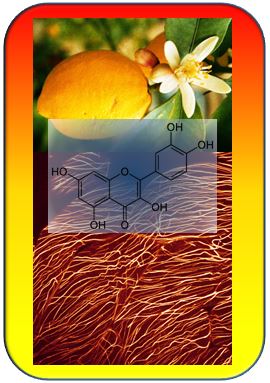2015_09 Gallic acid, ancient Chinese lemons, and cancer cells
What is the background?
Microtubules are a central building block of the cytoskeleton and provide important targets to manipulate cells. Most compounds used in chemotherapy of cancers address microtubules. The rapidly proliferating cancer cells are more sensitive to these compounds as compared to the healthy cells of the Patient. Fortunately Nature has already prepared a treasure of molecules to be exploited. Especially plants with their estimated 1 million of secondary compounds provide valuable resources. The alkaloid Taxol (Paclitaxel) from the Pacific Yew alone has a market volume of around 1000 Mio €. New compounds will help to make chemotherapy more specific and to quell undesired side effects. We are currently focussing on genetic resources from China. Our Citrus fruits originate from there and therefore wild ancestors and old varieties can be found that are not used any more due to their bitter taste. These resources provide plenty of bioactive compounds. We are mining molecules that affect microtubules. By comparing compounds of Citrus used in Traditional Chinese Medicine to cure cancers with those of other Citrus species, we identified the secondary compound gallic acid.
How does gallic acid act?
In cooperation with the team of Prof. Dr. Ute Schepers (Instituts for Toxicology and Genetics, KIT Campus North) we have investigated the mode of action of gallic acid in HeLa cancer cells. We found that gallic acid can induce apoptotic cell death. This is linked with arrest of the cell cycle just when the cell starts to divide. Whereas healthy cells develop a spindle with two poles, cancer cells often form abnormal, multipolar spindles leading to disturbed division and multinuclear giant cells that will not live long. However, cancer cells have developed a survival strategy to circumvent this problem: they glue the centrioles (these are organelles organizing the spindle) together, such that two, more or less functional poles are generated. It is this gluing process that is inhibited by gallic acid. For healthy cells, there will be no problem - they harbour two centrioles only. Cancer cells, however, suffer and die after a few divisions. Gallic acid, therefore, turned out to be a novel interesting compound for tumour therapy.
Publication
Tan S, Grün C, Guan X, Zhou Z, Schepers U, Nick P (2015) Gallic acid induces mitotic catastrophe and inhibits centrosomal clustering in HeLa cells. J Toxicol in vitro. doi:10.1016/j.tiv.2015.09.011 - pdf

